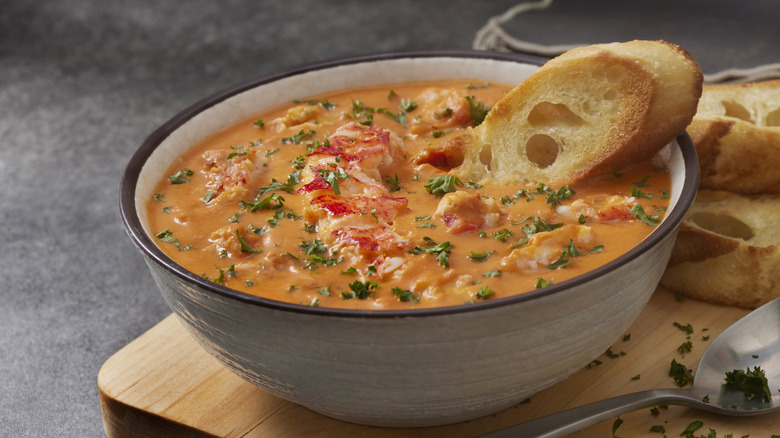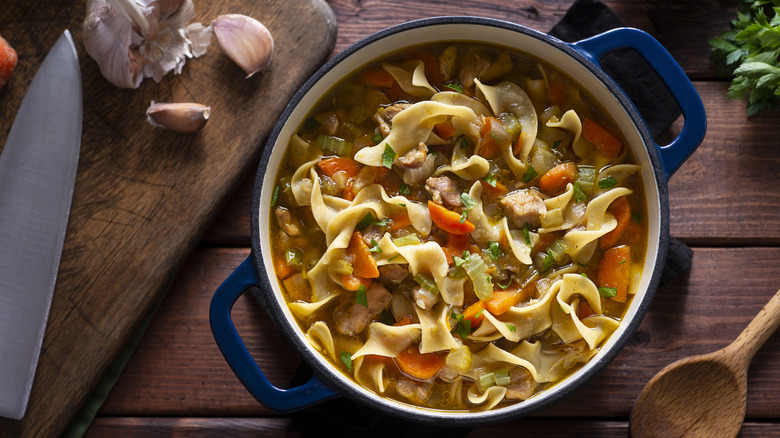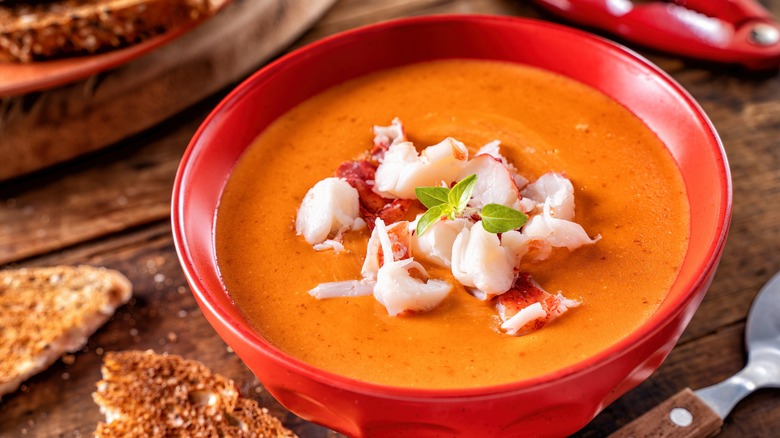Soup Vs Bisque: What's The Difference?
For many, soup is the ultimate comfort food. It is warm, soothing, and relaxing. One study revealed that just holding a bowl of warm soup in your hands can make you feel more positive toward and accepting of others. Soup is an easy way to ingest vitamins and nourish your body. And some believe eating soup takes you back to being a child and feeling cared for.
But soup is a general term and it encompasses many types of foods. Since you might have a more rewarding experience eating one type over another, it is important to understand the differences. For instance, all bisques are soups, but not all soups are bisques. What makes a soup a bisque?
A bisque is a thick soup. The base is made with lots of cream and ingredients that have been blended down to an ultra-smooth texture. For example, if you were making a tomato bisque, you would heat and blend until all the ingredients formed a thick, creamy paste of uniform consistency.
What is soup?
As noted, soup is a broad term that is used to describe a liquid-based food. Interestingly, soup isn't wholly defined by its ingredients. Soup could contain vegetables, protein, water, milk, beans, stock, broth, and more. It is the liquid nature of a dish that makes it soup. That, and the fact that a soup must be cooked. This is why cereal is not considered a soup, but oatmeal might be.
Because the definition of soup is so loose, that opens the door for many types of heated liquid nourishment. Since soups are not necessarily defined by their flavor or ingredients, you can have chicken noodle soup, beef barley soup, vegetable soup, and even chocolate soup. Classification is much more dependent on consistency and type of base. For example, you can have broth-based soups, consommes, cream-based soups, bisques, and more. In short, if you have cooked it, and you can eat it with a spoon, it is probably a soup.
What is bisque?
Like many foods, bisques have evolved over the years. Consequently, the definition of what can be classified as a bisque has broadened to be a little more inclusive.
Traditionally, the main ingredient in a bisque was some type of seafood. A bisque was made with ingredients like lobster, crab, shrimp, or crayfish. The shells were ground down into a paste, and cream was added near the end of the recipe to produce a smooth and decidedly thick base that featured meat from the shellfish, along with butter and a garnish.
Today, seafood is not necessarily an essential ingredient in bisque. A modern bisque could feature pureed vegetables instead of seafood. For instance, pumpkin, zucchini, corn, leeks, tomatoes, and more are all suitable ingredients for creating a bisque. Also, the base might include rice or other starches that serve as a thickening agent. And heavy cream and white wine are also common ingredients in today's bisque recipes.


